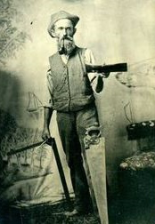
I came across this 1847 headline only recently, which refers to a seventy-nine year old carpenter, John Wright, who lived for forty years in my own house in Westminster. One Saturday afternoon, the local tax collector's broker came to the house with a warrant to seize property for 18 months' taxes, amounting to £9. He was let in by John Wright's sister and made an attempt to open the front parlour which was occupied by lodgers. He then 'bounced upstairs' to the first floor and began taking an inventory. John Wright asked him to wait for three hours and he should be able to settle the demand, which was refused. An hour later the old man was discovered in his workshop behind the house suspended from a beam. At the inquest the jury returned a verdict of 'Temporary insanity, caused by the harsh measures adopted by the tax collector.'
The verdict of temporary insanity was an important one. Religious sanctions against suicide would remain strong throughout the 19th century, and for a death to be declared 'felo de se' (felon of himself), an old legal term for suicide, it had to be proved the person was sane. Until 1823 in Britain, such suicides were denied a Christian burial - and instead were buried at a crossroads in the dead of night, a wooden stake hammered through the body pinning it in place. And punishment did not end with death. The deceased's family were stripped of their belongings which were handed to the Crown. The suicide of an adult male could reduce his survivors to pauperism.
If a suicide could be shown to have been carried out when the victim was of unsound mind or uncertain mental state, the legal requirements were different. The individual could be buried in a churchyard, usually in a specially designated area or near the boundary. Until 1882, suicides by law had to be buried between 9pm and midnight.
John Wright was buried in the churchyard of St. Margaret's Westminster in November 1847. There were 300 burials that year and complaints were made about the obnoxious state of the burial ground. Coffin remnants were heaped to one side and the smell was sickening, according to 'The Builder'. The ground was eventually closed for burials in 1853.
